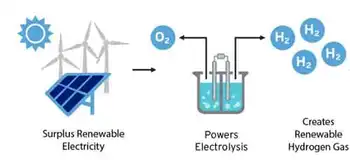GE Energy loans $50 million to Star Energy
By Industrial Info Resources
CSA Z463 Electrical Maintenance -
Our customized live online or in‑person group training can be delivered to your staff at your location.

- Live Online
- 6 hours Instructor-led
- Group Training Available
The loan is for the 220-megawatt (MW) Wayang Windu plant, located near the town of Pangalengan, some 200 kilometers south of Jakarta, and comes at the completion of a steam feed and turbine project designed to double the output of the plant. The plant is managed under a joint operating contract with the Indonesia's government-owned oil and gas organization Pertamina.
The Wayang Windu plant began operating in 2000 and boasts the largest single geothermal turbine in the world. Initially designed to deliver 110 MW, the recent addition of the steam feed and turbine brings the production capacity to 220 MW. Through the joint operating contract, MNL believes the plant has the potential to produce more than 650 MW.
The plant taps into natural pockets of steam and hot water, some as much as 3 kilometers underground, and is named after Mount Wayang and Mount Windu, which are in the highland region of West Java. A mixture of steam and hot water is piped to the surface, where it powers a conventional steam turbine, which itself generates power. After use, the geothermal fluid is returned underground. Being emission-free, the plant is estimated to save the carbon dioxide equivalent of more than 1.2 million tons of greenhouse gas emissions per year.
Indonesia is strategically located on the "Ring of Fire," a line of volcanic activity that circles the Pacific Ocean, and has the potential to produce large supplies of clean, renewable energy from geothermal sources. Some estimates place total reserves from this source at 27,510 MW, potentially the largest in the world, but to date Indonesia has managed to utilize less than 1,050 MW, or about 5% of the potential.
The government of Indonesia recognizes the vast potential that geothermal power offers and has plans to install a further 9,500 MW of geothermal-producing capacity by 2025, bringing the contribution of geothermal energy up to about 6% of the country's total demand.
Although geothermal energy is classified as a renewable source of energy, as the heat extracted is a small portion of the total heat contained within the earth, in theory it has a finite lifetime, which is usually calculated in terms of centuries or decades. However, care needs to be exercised to avoid local depletion of either the heat source or the underground water.
Despite its advantages, geothermal energy remains the slowest growing of renewable energy sources. Overall global capacity grew 422 MW in 2008, equivalent to 4.2% of the total additional renewable energy capacity of 10,400 MW in the year, with new power plants being brought online in the U.S., New Zealand, Turkey, Kenya and Iceland as well as Indonesia.
The U.S. continues to have the largest geothermal capacity with 3,000 MW, followed by the Philippines with 2,000 MW, and Mexico and Indonesia with a geothermal power generating capacity of 1,000 MW each.











